More power! That’s the cry of today’s desktop. If you’re anything like me, you probably have a tangled web of mismatched chargers, or you may find yourself looking behind furniture for that spare outlet to test out some gadget. The CHOETECH Desktop Multi USB Power Strip aims to address this in one simple package.
The CHOETECH Desktop Multi USB Power Strip C0045S comes in a simple box without much else.
Dimensions: 133.5mm x 98.5mm x 41mm
On top you’ll find two power outlets. There are five “Smart” USB ports at the bottom. The attached power cord comes with a cable wrap. Nice touch.
Next to the power cord is the power switch. This switch turns both the AC outlets and the USB plugs on or off. You don’t get to pick or choose.
The rear label. This hints that the USB ports are rated at 2.4A each.
I didn’t even notice this until I plugged it in. There’s a tiny blue LED that lights up when power is on.
Feeding time! Flip the one switch and everything is energized. Yes that’s a pig lamp. It used to have a curly fluorescent bulb, but he’s been updated with an LED bulb.
As with many of these multi-USB chargers, this one features so-called “smart” charging tech. The idea is supposed to supply on-demand current, depending on the device’s needs.
I’ve always been a little skeptical of this. After all, a device won’t simply slurp more electrons because a power supply lets you. Most of the time, your smartphone or gizmo will just take what it can get, and charge slower (or faster). My tinfoil hat mindset thinks this is either marketing hype or a cheat to say each port can supply “up to” 2.4A, just not all at once.
I was unable to scientifically test the claims of 5 USB x 2.4A, but I did stumble across this cryptic, hard-to-read excerpt from the included instructions (scanned from paper):
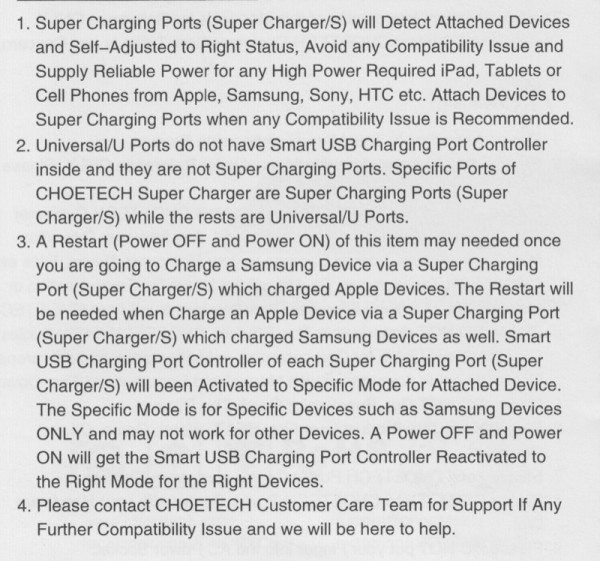
This charger doesn’t have any “Super Charger/S” or “Universal/U” labeled USB ports. They’re all labeled the same: “Smart”. These could be instructions copied from a different device. It could be that to take advantage of “faster” (higher ampere) charging, you may need to restart the charger while your device is plugged in.
Tinfoil hat aside, do I like the CHOETECH Desktop Multi USB Power Strip? You bet I do. I’m going on a trip soon, so I’ll bring this along so I don’t have to hog up multiple outlets while staying at a friend’s house.
Source: The sample for this review was provided by CHOETECH. Please visit their site for more info or Amazon to order.
Product Information
| Price: | $26.99 (Amazon) |
| Manufacturer: | CHOETECH |
| Retailer: | Amazon |
| Requirements: |
|
| Pros: |
|
| Cons: |
|

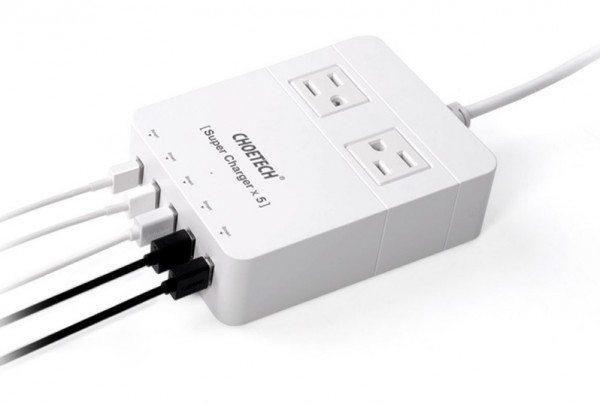
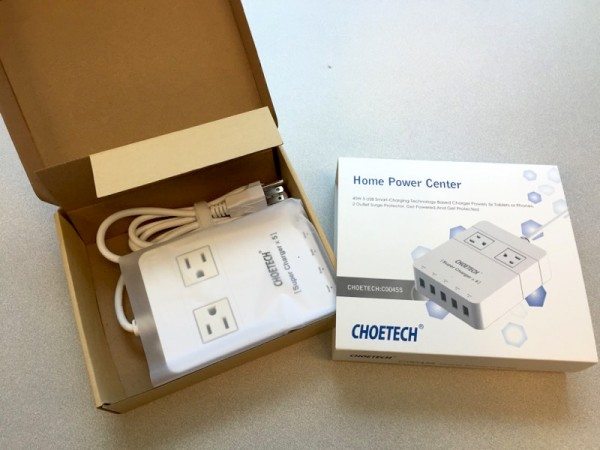
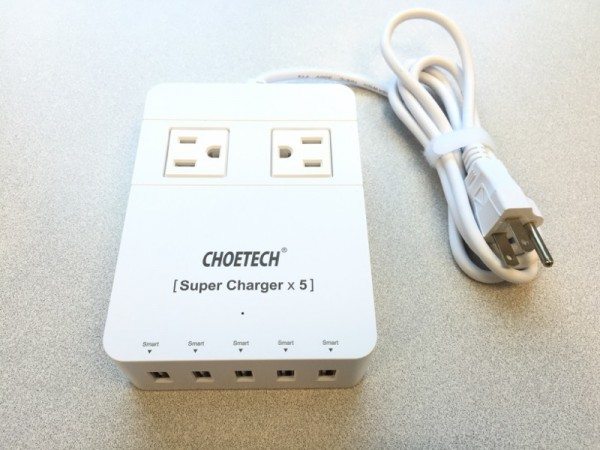
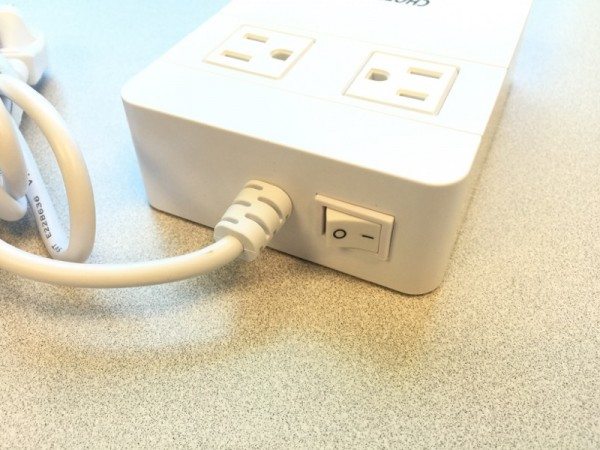
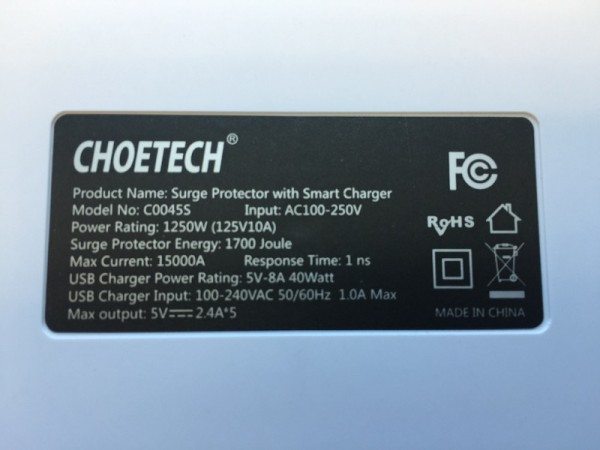
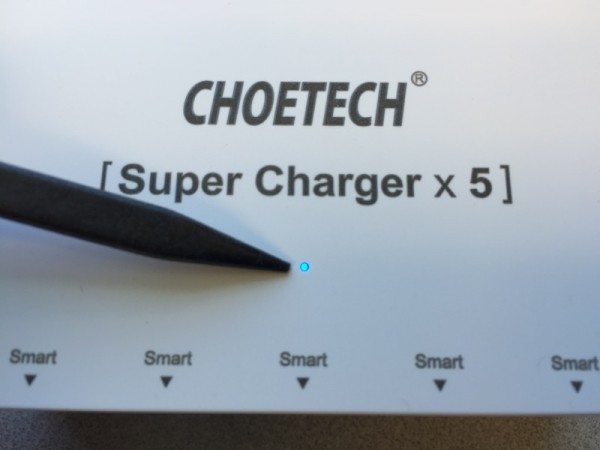
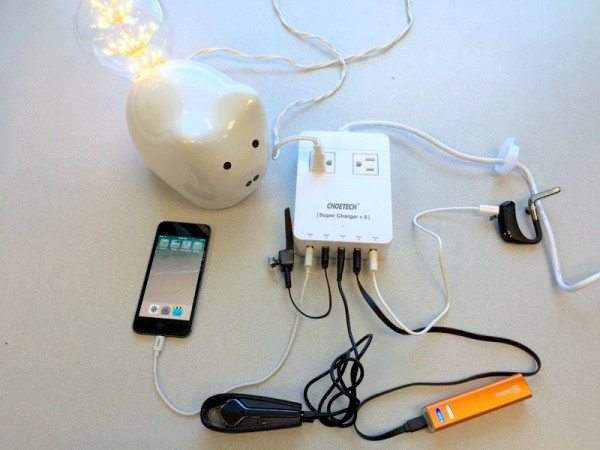
Gadgeteer Comment Policy - Please read before commenting
Andy, “Smart” USB chargers do exist, you can use your tin hat for something better, like BBQ corn.
The devices that “won’t simply slurp more electrons because a power supply lets you” is not true. However there are methods used to protect this. without this plugging a New tablet into an old USB computer or charger would cause an over amp situation damaging your computer and/or charger. Lets break down how this works. If your device tried to pull 2A or more on a charger rated for half an amp (500mA) your charger can overheat, and burst into flame (or probably just die)
USB 1.1 provides a max current draw of 500mA.
USB 2.0 provides a max current draw of 2A
USB 3.0 provides a max current draw of 3A
Since USB must remain backward compatible, all devices must initialize and function within the 500mA range to remain “IN SPEC”
You plug your new phone into a USB charger or computer, the charger/computer will initiate the connection with a max draw of 500mA’s. Once the USB protocol has been established it can negotiate to switch to USB 2 or 3 specs. The charger will then bump the max amperage to a higher level and the device will then pull the power at that level. There is also a provision in USB 2 and 3 to request UPTO 5A amp for charging. This must be negotiated between the device and charger.
Now since all devices must retain the original 500mA spec, they must all conform to this basic low charging method. Using a “dumb” charger that does not have the capability (electronics) to negotiate abilities will cause the device to assume the charger can not supply more then the 500mA, thus will limit the current it draws. This is done both for safety and compliance to spec.
Finally we come to those special “super turbo chargers” You will usually see these ports marked specifically Samsung/Apple, etc. “Super high speed” charging is technically out of the USB specs. However Apple/Samsung etc, have developed additional negotiation abilities to establish currents above the 2A’s provided by the standard (to a max of 5A which is max electrical current the specs can support). But because this is not a standard, and both Apple and Samsung use different methods to communicate this negotiation to the charger it will only work with the specific chargers sold with the device.
However these 3rd party USB charger companies have either reverse engineered or licensed this this negotiation method from Apple/Samsung they can incorporate the function into the chargers. The chargers and now called “universal” or “smart” because they have the logic/brains to detect these specific devices, and preform outside of USB specs for JUST these devices.
You are right tho about one thing. A Usb charger that always supplied 3amps would not hurt or damage a device that can only draw the 500mA. The system exists for the reverse. If we had a bunch of devices trying to pull 3A’s from 500mA chargers we would have alot more people talking about exploding wall warts.